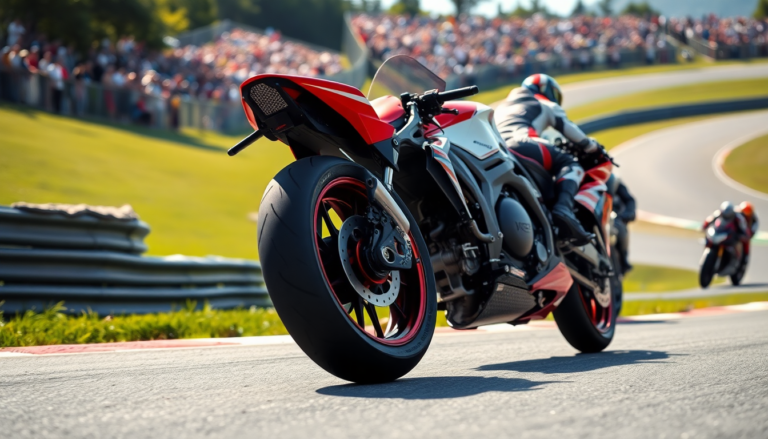Argomenti trattati
The Superbike World Championship, often known as WorldSBK, has become a cornerstone of motorcycle racing since it first revved into action back in 1988. This thrilling series showcases heavily modified production motorcycles, giving fans a front-row seat to a spectacular blend of cutting-edge technology and raw speed on the racetrack. Over the years, the championship has not only celebrated its rich heritage but has also adapted to the ever-changing landscape of motorcycle racing, making it one of the most popular motorsport events worldwide.
The Origins and Structure of the Championship
Launched in 1988, the Superbike World Championship was conceived to feature modified versions of commercially available bikes, which sets it apart from MotoGP, where purpose-built machines dominate the scene, much like in Formula One racing. The championship unfolds across multiple rounds at premier racing venues, with each event typically showcasing two full-length races. Since 2019, fans have been treated to an additional ten-lap Superpole race, creating a three-race format that ramps up the excitement and culminates in annual championships for riders and manufacturers, and starting in 2024, for teams as well.
Throughout its history, the Superbike Championship has seen varying levels of factory involvement. In the early days, Ducati emerged as a powerhouse, taking full advantage of the 1,000 cc V-twin engine configuration and significantly impacting the competitive landscape. This era was marked by the legendary performances of riders like Carl Fogarty and Troy Bayliss, with Fogarty clinching an impressive four championships, cementing his legacy in the sport.
Regulatory Changes and Competitive Dynamics
As the championship evolved, the FIM implemented various regulatory changes aimed at boosting competition. A pivotal moment came in 2003 when the rules were revised to allow 1,000 cc machines, leading to a more diverse lineup of competitors. This shift opened the door for manufacturers like Honda, Suzuki, and Kawasaki to join the race, though Ducati still managed to maintain its dominance for several seasons.
In 2011, the landscape shifted dramatically when Ducati transitioned from a factory team to supporting privateers, further altering the competitive dynamics. The introduction of control tyres and other regulatory adjustments sparked debates among teams about fairness and performance. Despite these challenges, skilled riders like Max Biaggi and Jonathan Rea emerged, with Rea making history by securing multiple championships with Kawasaki, showcasing an extraordinary level of skill and consistency that fans won’t soon forget.
Recent Developments and Future Trends
In recent years, the Superbike World Championship has continued to evolve, especially with the introduction of a new race format in 2019 that features two traditional races alongside a sprint race. This fresh format has not only ramped up excitement for fans but has also provided teams and riders with additional avenues to demonstrate their prowess on the track. Moreover, the championship has expanded its horizons beyond Europe, hosting races in diverse locations such as the United States, Asia, and South Africa, further solidifying its global appeal.
Looking ahead, the championship is poised to face both new challenges and exciting opportunities, particularly in terms of technology and sustainability. With manufacturers increasingly turning their focus to electric and hybrid technologies, we can expect to see significant shifts in the types of motorcycles competing in the Superbike World Championship. Furthermore, the ongoing evolution of racing formats and regulations will continue to shape the competitive landscape, ensuring that this thrilling series remains relevant and exhilarating for fans and participants alike.

